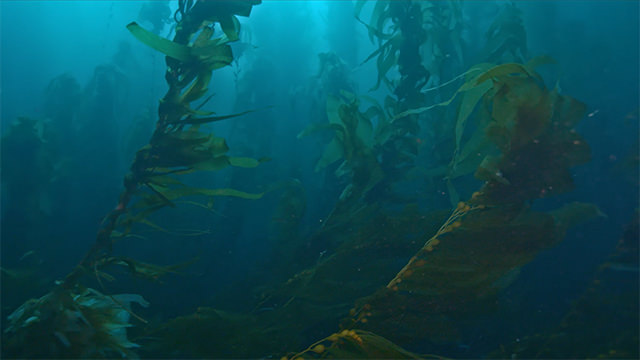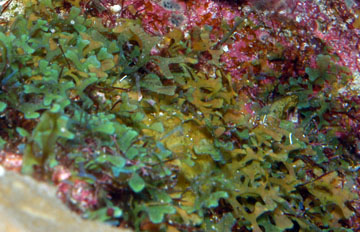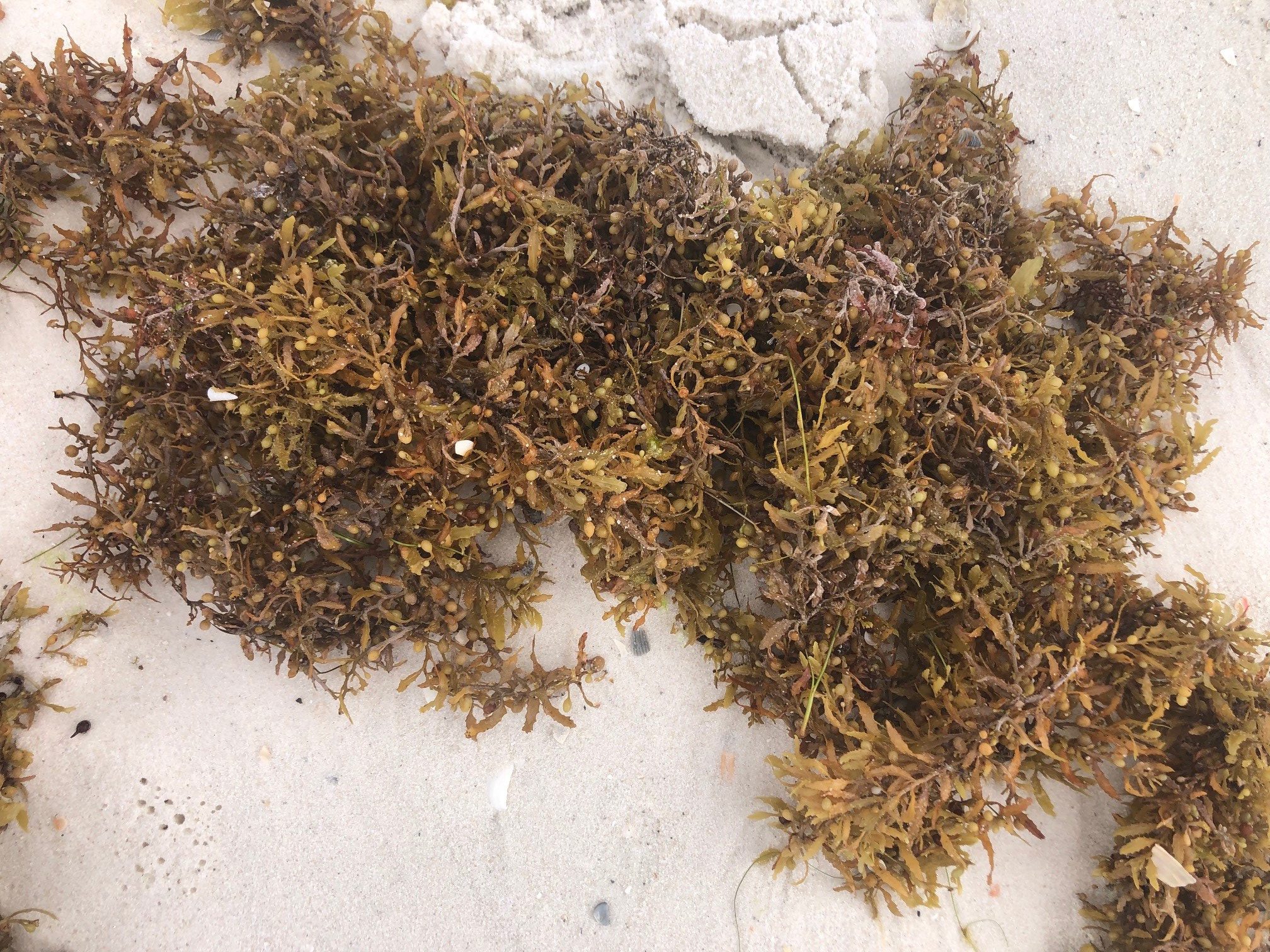If green algae are difficult to find in the northern Gulf because most prefer freshwater, and rocky shorelines, brown are difficult because the group prefers colder water, as well as rocky shorelines – but we do have some here.
Brown algae get their color because the ratio of photosynthetic pigments in their cells favors the xanthophylls – which produces a yellow-brown color. Like most macroscopic algae, they attach to the hard bottom using a holdfast and then extend their stipe and blade into the water column to absorb light. One group of brown algae are the largest of all seaweeds, the giant kelp Macrocystis. In the nutrient rich waters off California this seaweed will grow up to one foot a day and can reach heights of up to 175 feet tall. Since seaweeds do not possess true stems, or any wood, what holds this giant seaweed up are air filled bladders called pneumatocysts – structures found on other brown algae and are unique to the group.
Many species are popular with seafood dishes, such as Nori. Others produce a carbohydrate known as algin that is extracted and used as a food additive. You may have heard “ice cream has seaweed in it”. What it actually has is algin. This carbohydrate acts as a smoothing agent for products. Solids should be solid – like frozen ice cream – but, as you know, we do not want our ice cream solid. So, for a period of time, the algin keeps the ice cream smooth and creamy. Algin is used in toothpaste, lipstick, and icing on cakes for the same reason.
But along the northern Gulf coast, brown algae are not common. Despite preferring marine waters, they do prefer colder water and, like most seaweeds, need a hard substrate to attach their holdfast. But by exploring our local rock jetties and seawalls we do find some. One in particular is the common rock weed – Dictyota. This sessile seaweed branches out and resembles small trees. But the most common, and most recognized brown algae on our coast is Sargassum.
Sargassum has found a way to deal with an environment where little hard bottom is present. Using the characteristic air bladders allows it to float at the surface to absorb the much needed sunlight. Because of this ability to float, Sargassum can be found all across the oceans, and often form large mats that cover miles of open sea and extend several feet down. It actually creates a whole new ecosystem in the middle of the sea. The major ocean currents rotate like a hurricane and, like a hurricane, the center – the “eye” – is calm. Within this calm huge mats of Sargassum collect. The ancient sailors called the center of the Atlantic Ocean the “Sargasso Sea”. But as the large currents spin, sections of this large mat “spin off” and are pushed across the ocean. Much of it heads towards Florida, the Gulf, and eventually to the northern Gulf.
If you grab a mask and snorkel and swim within the Sargassum before it reaches the waves, you will encounter a whole community of creatures that live here. Sargassum crabs, Sargassum fish, and even seahorses live within it. There are shrimps, worms, and even mollusks. When baby sea turtles head offshore after hatching, many seek out these Sargassum mats to both hide in, and feed within. They will spend their youth here before returning back to shore for different prey.
However, once many of these creatures sense the waves breaking, and now the mat is about to wash ashore, they will move to mats further offshore. That said, picking through the Sargassum on the beach may still yield some interesting creatures.
In recent years the amount of Sargassum washing ashore has increased and become problematic – particularly in southeast Florida and the Florida Keys. At times, mounds three feet high have been found. Those communities are working on methods to deal with the problem. But here locally, these mats are a new world to explore.
References
Giant Kelp. Monterey Bay Aquarium. https://www.montereybayaquarium.org/animals/animals-a-to-z/giant-kelp.
- Rattlesnakes on Our Barrier Islands; Part 1 Knowing the Snake - December 8, 2025
- Tips for Bear Encounters this Fall - November 10, 2025
- Pensacola Bay Invasive Species Summer Survey 2025 - November 3, 2025



